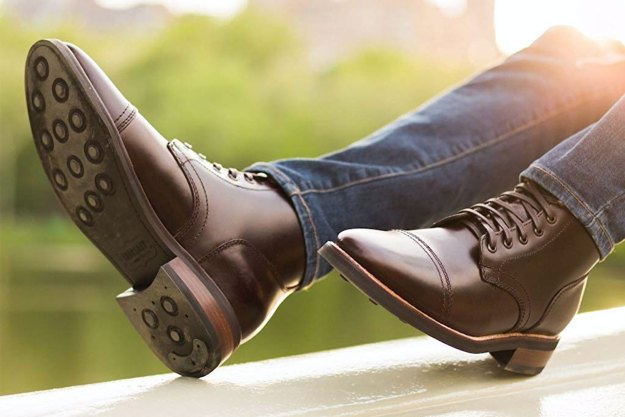
We can’t always sequester ourselves indoors to the comfort of the air conditioning. Sooner or later, we all have to venture to the great outdoors. An outdoor lifestyle is more than just getting in a quick workout, run, or bike ride. We long for the ample sunshine and warm days that allow us to recharge before winter once again creeps in and relegates us to spending more time inside than out.
Outdoor manufacturers tend to be proactive in choosing fabrics that are ideal for active endeavors as well as lifestyle-related apparel. In recent years, lifestyle brands have started utilizing some of these specific fabrics that allow the wearers to pull double duty should the opportunity arise. So whether you are camping, hiking, running, or just strolling around the park, it’s important to choose your fabric wisely, as it can make the difference between feeling hot or feeling and looking cool.
Here are some key factors to consider when seeking out apparel that will not only be breathable but also remain cool for this season and beyond.
Moisture-Wicking
We can’t always reduce sweating. However, we can assist our body’s natural cooling mechanism in transporting the moisture away from our skin so that it evaporates more readily. Certain fabrics help facilitate this more effectively than others.
Fit
This depends on the activity. If you are engaging in an active pursuit, you will want to have a fabric that comes into closer contact with the skin. This will allow the fabric to perform its role in moving moisture away from the skin. If you’re spending the time pursuing a more leisurely activity, choosing a looser fitting option is ideal.
Fabric Weight
Fabrics designed for warmer weather are created using a looser weave pattern and tend to be much lighter than those used for creating more warmth.
Color
Choosing lighter colors can also affect how warm or cool you stay while outdoors. Wearing colors that reflect light versus those that absorb the sun can be instrumental in keeping your cool.
Additional Features
Some of the features that are often added to warm-weather apparel include pit zips, mesh panels, and vents.
Here are some of the best fabrics to beat the heat. Additionally, we have included some of our favorite manufacturers within each category to help keep you looking (and feeling) cool and stylish.
Best Breathable Fabrics
Cotton
Cotton often gets a bad rap in the apparel industry when it comes to outdoor endeavors. Once wet (and it can become easily saturated on humid days), it typically stays wet. However, cotton is durable, soft, and highly breathable, making it a great casual option for warmer days. And while cotton can be one of the most readily available fabrics, it’s important to choose manufacturers that utilize responsibly sourced organic cotton. Patagonia makes a multitude of apparel options, including pants and shirts, using organic cotton.
Linen
This natural, luxurious, and durable material is created from the fibers of the flax plant. Historically, apparel made of linen has often been associated with society’s upper classes. This had to do with the laborious process required to produce the costly fabric. The fabric is highly breathable and ideal for warm-weather attire. Banana Republic offers some great linen short and shirt options for casual wear while also offering linen suits for outdoor weddings.
Synthetic
This is likely the most diverse group of fabric options, as there are so many options. We will cover a variety of them below, along with a few proprietary iterations that are making waves in the fabric realm. Most, if not all, synthetic materials used in apparel are petroleum-based and therefore are non-renewable. However, there are a lot of initiatives that source recycled products like plastic water bottles, fishing nets, and other plastic waste to find new life in the apparel industry. Patagonia is one such brand that has been pushing the limits with regard to sourcing sustainable materials and utilizing recycled (and recyclable) materials whenever possible for its line of gear and apparel.
Take note: It’s rather common for other fabrics in this larger list to be combined with synthetic fibers to increase the durability and longevity of the product.
Polyester and Nylon
Polyester is the most widely used synthetic material. It’s softer, more comfortable, and just looks better than earlier generations of the fabric. It’s ideal for use in gear and apparel, as it is extremely durable and long-lasting. The fabric’s breathability is determined by how tightly woven it is and the size of the yarn.
Nylon is another petroleum-based product that is also widely used in an array of apparel options, though less than polyester. Polyester and nylon are often combined to create a blend that provides a fabric that combines the best of each.
Silkweight
This material is made from a blend of 88% recycled polyester, with the remaining portion being comprised of new polyester fiber and spandex. Corbeaux makes a line of Silkweight Tees that are great for high-output activities or just cruising around town.
FlashDry

This proprietary fabric technology from The North Face is designed to manage moisture while moving it as quickly away from the body as possible.
Merino Wool
We’re not talking about your father’s wool sweater or that wool turtleneck that likely drove you crazy as a kid until you could shed its itchy embrace. Merino wool is often used in base layers and apparel for winter endeavors. However, its natural properties make it the perfect choice for trek, travel, and navigating the urban jungle in hot weather.
Bamboo
This super fabric is derived from natural fiber, is inherently antimicrobial (this also helps it fight odors if you do sweat a lot and need a little extra help), and is highly sustainable. Additionally, pandas love it as a food source. And while bamboo can stand alone in the fabric realm, it can also be combined with an array of other products, like cotton and synthetic fibers, to create a wider range of products.
Silk
Silk is super soft, has a luxurious feel, and is highly breathable and lightweight. It is most commonly used in producing underwear and often used in high-end casual wear. And while this luxurious fabric has many positive attributes, it is a fragile material and usually requires hand-washing. Tommy Bahama Hawaiian shirts are often made with 100% silk.
Read more: Best Summer Style Trends
Editors' Recommendations
- The best men’s swim trunks to wear (for both style and comfort)
- The best shorts for men to look cool on those sweltering hot days
- How to wear green on St. Patrick’s Day — style tips you need to look your best
- Signature style: How to look your best no matter the occasion
- The best stylish workout gear to help you stick to your 2023 fitness resolutions




